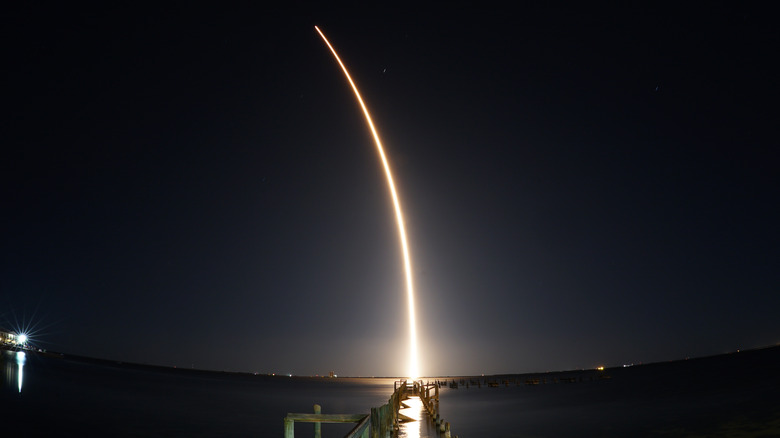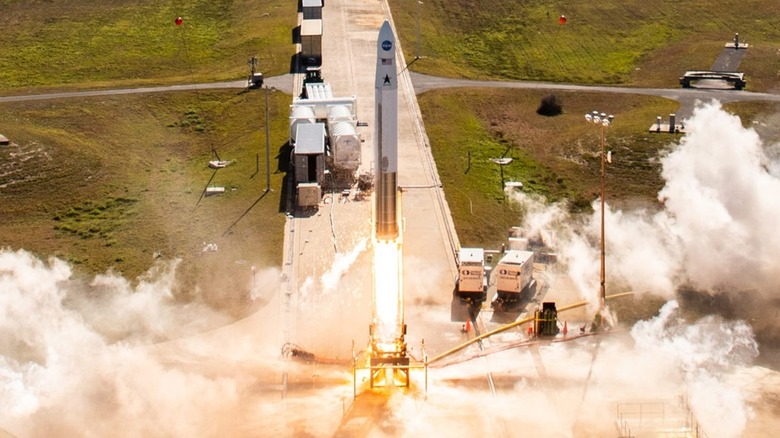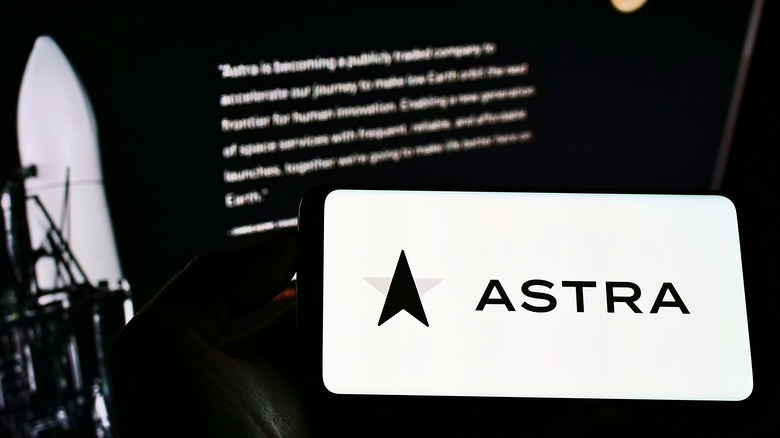SpaceX Rival Astra Reveals The Two Flaws That Ruined Its First Payload Launch
Astra, the private space launch company, has detailed what went wrong during its February 10 launch, which failed to carry four satellites into orbit, resulting in their loss. The launch took place with Astra's Launch Vehicle (LV) 0008 from Cape Canaveral in Florida — had it been successful, the mission would have marked the first time the company delivered operational CubeSats (for NASA, in this case) to their final destination.
At the time, the launch vehicle was observed spinning a few minutes after taking off, ultimately failing to reach orbit. Astra had said it would provide details about what went wrong after reviewing the matter. That time has finally arrived, with the company explaining in a new blog post that an electrical issue and software problem are ultimately to blame, one of which could be traced back to "an error in an electrical harness engineering drawing." What does this mean for the company?
Drawing and software issues led to mission failure
Astra explains the issue happened during the upper stage separation part of the launch, with the "anomaly" preventing the upper stage from completing the mission. The investigators narrowed this issue down to the payload fairing, which was supposed to deploy completely before the upper stage ignition kicked off. That didn't happen, though, because the five separation mechanisms for this fairing were engaged in the wrong order.
That unexpected change in the order of the separation mechanisms caused movement that led to a "disconnection," preventing the final separation mechanism from firing like it was supposed to. Because that mechanism failed, the payload fairing wasn't able to fully break free before the aforementioned upper stage ignition happened.
That wasn't the only problem, however, with Astra also revealing that a software problem prevented the Thrust Vector Control system from working. Because the upper stage was unable to use this system, it started tumbling after the separation stage failed, sealing the mission's fate. The launch didn't manage to get the small satellites into orbit and all four of them were lost as a result.
Astra says it has learned from this mistake
This was an unfortunate outcome for Astra's first big customer payload launch, but the discovery of the drawing error, as well as the software issue, may have prevented additional future launches from failing. Astra explained as part of its announcement that upon finding this error, it was able to fix both the drawing and adjust harnesses that has already been built. Beyond that, the mission failure has led the company to add a new test to its pipeline that'll help it spy any similar problems like this before future missions.
As for the software problem, the company says it has made its suite "much more robust." Whether this will help reassure future customers is another matter, as the loss of payloads is always disappointing at best. Despite these issues, Astra revealed it is already getting ready for its next mission, LV0009. Though many details about this future launch haven't yet been provided, some have surfaced in an FCC document, including that the mission will kick off from Alaska.


